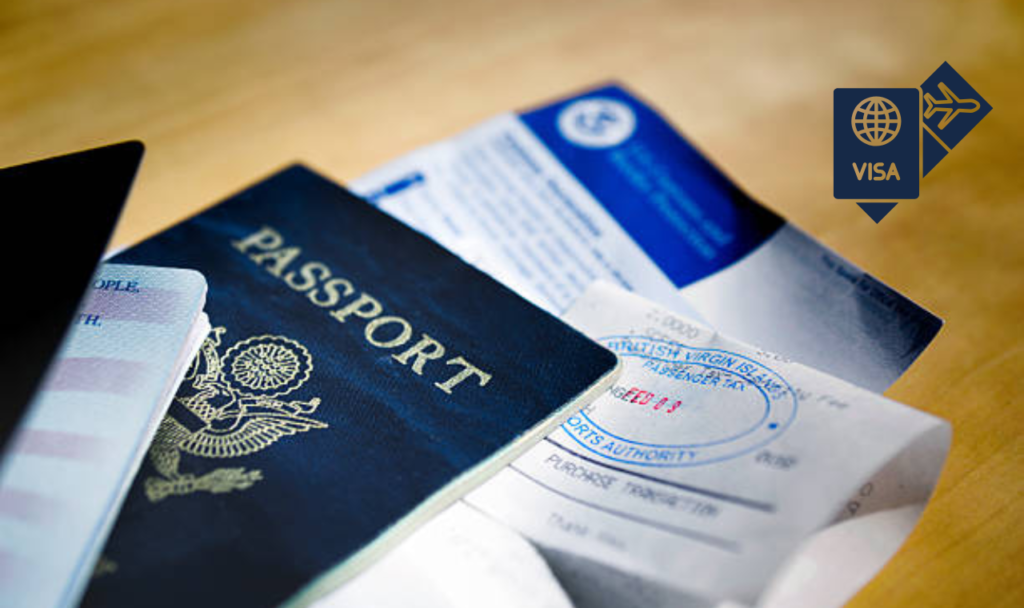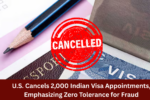Traveling internationally can be an exciting experience, but for U.S. visa holders, it requires careful planning to ensure a smooth journey. Carrying the right documents is crucial to avoid any issues at immigration checkpoints, both when entering another country and when returning to the United States.
This guide outlines the essential documents every U.S. visa holder must carry when traveling abroad, ensuring compliance with immigration rules and minimizing travel disruptions.
1. Valid Passport
Your passport is the most fundamental travel document. Most countries require that your passport be valid for at least six months beyond your intended return date to the U.S. Failing to meet this requirement could result in denied boarding or entry into another country.
2. Valid U.S. Visa
A valid U.S. visa is necessary to re-enter the country after traveling abroad. The visa must match your immigration status (e.g., F-1 for students, H-1B for workers, B-2 for visitors). If your visa is expired, you will need to apply for a renewal at a U.S. embassy or consulate while abroad.
Check visa processing times and application procedures on the U.S. Department of State’s visa page.
3. Form I-797 Approval Notice (For Work Visa Holders)
For those on employment-based visas, such as H-1B or L-1, carrying the latest Form I-797 (Notice of Action) is crucial. This document serves as proof that your work visa petition has been approved. Border officials may request this form when re-entering the U.S.
4. Employment Verification Letter and Recent Pay Stubs
Work visa holders, particularly those on H-1B or L-1 status, should carry an employment verification letter from their employer. This letter should confirm the details of your employment, including job title, salary, and work location.
Additionally, having recent pay stubs (from the past three months) can help demonstrate that you are maintaining valid employment in the U.S. Some Customs and Border Protection (CBP) officers may ask for these as proof of ongoing employment.

5. Form I-94 (Arrival/Departure Record)
The I-94 form is an essential document that records your most recent entry into the U.S. It contains details about your visa status and the duration of your authorized stay. You can download and print your most recent I-94 from the U.S. Customs and Border Protection (CBP) website.
6. SEVIS Form I-20 (For F-1 Students)
Students on an F-1 visa must carry their SEVIS Form I-20, issued by their school’s Designated School Official (DSO). This form must be signed for travel endorsement within the past 12 months (or six months for students on OPT).
Before traveling, consult with your school’s international student office and review the Student and Exchange Visitor Program (SEVP) website for travel guidelines.
7. Certified Labor Condition Application (LCA) and Form I-129 (For H-1B Visa Holders)
H-1B visa holders should carry a copy of their Certified Labor Condition Application (LCA) and Form I-129 petition approval. These documents help demonstrate that you are maintaining lawful employment in the U.S. and can be required at border checks.
8. Visa-Specific Travel Documents
Different visa types have unique travel document requirements:
- L-1 Visa Holders: Should carry a letter from their employer confirming their intracompany transfer status.
- O-1 Visa Holders: Must have a copy of their petition approval and employment contract.
- Permanent Residents (Green Card Holders): If staying outside the U.S. for more than one year, a re-entry permit (Form I-131) is required to return. Learn more on the USCIS Green Card Travel page.
9. Proof of Financial Stability (Tax Returns and Bank Statements)
Having recent tax returns and bank statements can be beneficial, particularly if a border officer asks for proof of financial stability. This is especially important for visa holders applying for visa renewals abroad or those with pending Green Card applications.
10. Health and Travel Insurance Documents
While not a legal requirement, carrying travel health insurance is highly recommended. Many countries require proof of travel medical insurance for entry. If you are on an F-1 visa, ensure you comply with your school’s health insurance requirements.
Additionally, check for country-specific travel insurance requirements on the State Department’s travel website.
11. Emergency Contact Information and Copies of Documents
It is advisable to carry digital and physical copies of all critical documents, including your passport, visa, and I-94 record. Also, keep emergency contact details for:
- U.S. embassy or consulate in your destination country (Find embassies here)
- Your employer or school’s international office
- Trusted family members or legal advisors
Final Checklist Before Traveling
Before leaving the U.S., ensure you have:
- A valid passport (with at least six months’ validity)
- A valid U.S. visa (or proof of visa renewal appointment)
- Form I-797 (for work visa holders)
- Employment verification letter and recent pay stubs (for work visa holders)
- Form I-94 (downloaded from CBP website)
- SEVIS Form I-20 (for F-1 students)
- Certified LCA and Form I-129 (for H-1B visa holders)
- Proof of financial stability (bank statements, tax returns)
- Health and travel insurance details
- Copies of all important documents
Conclusion
Proper preparation is key to avoiding unexpected travel delays and ensuring hassle-free re-entry into the United States. By carrying the required documents, U.S. visa holders can enjoy their travels without the stress of immigration complications.
For the latest travel regulations and visa updates, always check the U.S. Department of State, USCIS, and CBP websites before departure.

Pankaj Kumar is a journalist at Chandigarh X, covering admit cards, recruitment, and government schemes. His articles provide readers with detailed insights into application processes, eligibility, and exam updates.
Outside of work, Pankaj enjoys traveling, fitness, and cricket, often participating in local matches on weekends.



